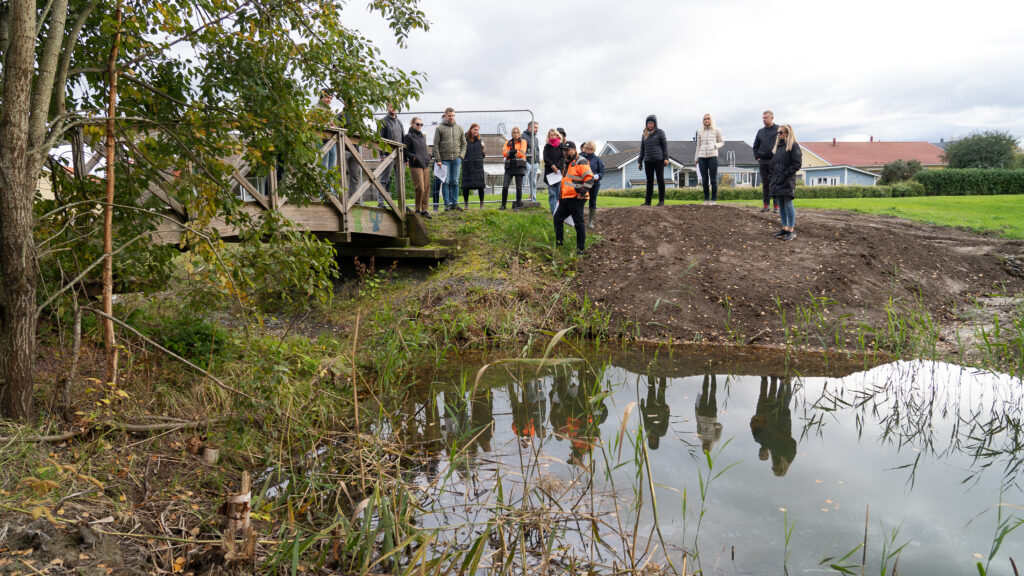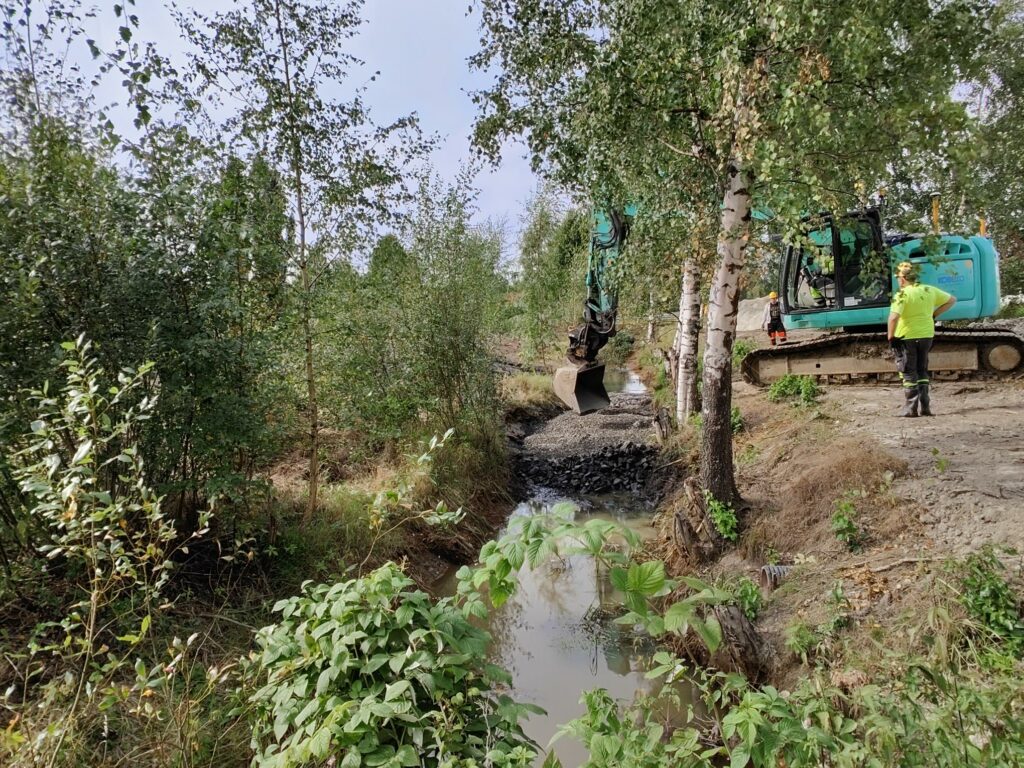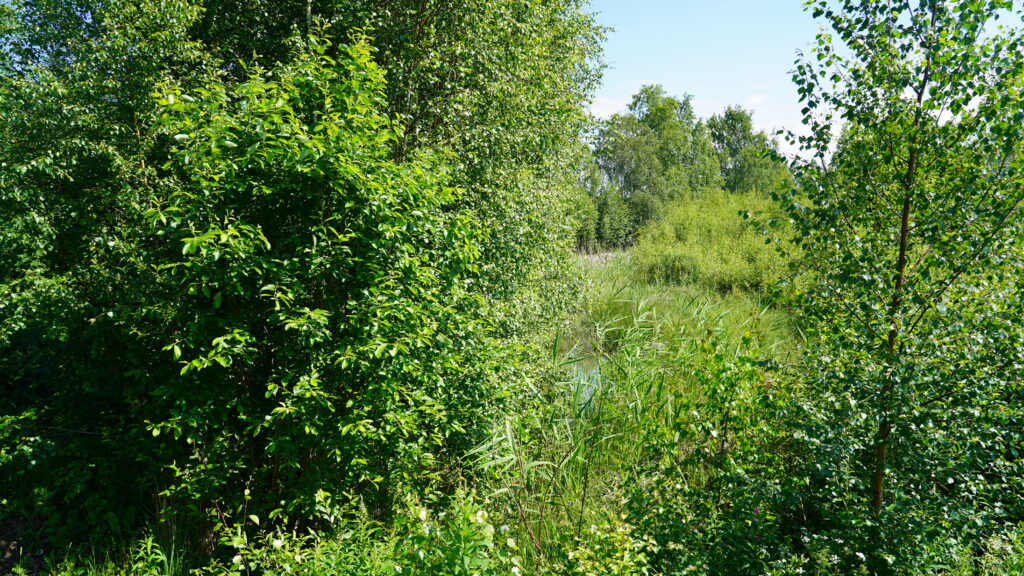Pilot Site in Spotlight: Pori’s Wetland Restoration Solution
The ancient Littorina Sea has left its traces – and they need our attention, for the sake of better water quality.

Photo: Krista Valkonen
What has a wetland in the city of Pori to do with the ancient Littorina Sea? The Littorina Sea is a historical geological stage of the Baltic Sea, which existed around 7 500–4 000 before present. As this wetland is an acid sulphate soil area, it can be concluded that it used to be a sediment seafloor layer of that ancient sea.
The problem with this type of soil composition is that if acid sulphate soil areas are dug up or drained and come into contact with oxygen, it causes the sulphate in the soil to oxidize forming sulphuric acid. The sulphuric acid can then release metals from the soil which are dissolved into water. Stormwater from acid sulphate soils affects the ecological and chemical status of the water body, deteriorating its quality.
In the Interreg Central Baltic co-funded MUSTBE project, the goal of the wetland pilot site’s nature-based solution (later in the text: NBS) is to neutralise the low pH of the surface water before it reaches the downstream ditches of the wetland.

Neutralisation Leads to Easier Removal of Heavy Metals
The neutralisation of the water causes the heavy metals to precipitate forming metal-rich sludge, thereby making it easier to remove them. The NBS contains filtration dams filled with different materials, such as sand, biocarbon, limestone, and dolomite. Sedimentation removal basins will also be constructed. The solution will be equipped with water quality sensing to gather real-time data about the treatment process. To assess the effectiveness of the solution, the monitoring solutions gather data on both water quality and quantity but also about weather conditions, for example.
New vegetation will also be planted in the area. Both the filtration dams and vegetation will decrease the amount of solid matter, nitrogen loads, and metals in the water. The planning process of the NBS included a water quality analysis. The measured total nitrogen concentration in the ditch was 7,5 mg/l while the target value is 6,0 mg/l. The measured suspended solid concentration was 340,0 mg/l. In this case, the improvement should be 60%, as the target value is 136 mg/l.
According to MUSTBE Project Manager and Civil Engineer Constructor Aleksi Siirtola from City of Pori, the nature-based solution for the wetland will be ready by the end of October year 2024, after which water quality monitoring and reporting will begin.

Photo: Krista Valkonen
Well-Being for Both Nature and People
The positive results of the wetland’s NBS are not only limited to better stormwater quality. The solution will also improve biodiversity and value of the landscape in the area. A multi-objective analysis of all the MUSTBE project’s seven pilot sites’ solution plans was executed during the early phases of the project. In addition to the categories of flooding reduction rate, water quality improvement, and urban heat reduction, the impact on public health and well-being was also analysed.
Pori’s wetland pilot site area will have better functionality after the construction of the NBS. For example, benches could be added in the area next to the existing road to create an improved urban green space. According to the World Health Organization (WHO), urban green spaces can promote mental and physical health and reduce morbidity and mortality in urban residents by providing psychological relaxation and stress alleviation, stimulating social cohesion, supporting physical activity, and reducing exposure to air pollutants, noise and excessive heat.
After the renovation, the accessibility of the area will be improved, and maintenance will be easier to carry out.
– Overall, the area will be more welcoming than before, Siirtola adds.
Facts about the Project
- The MUSTBE project is led by Estonian municipality Viimsi.
- In addition to Viimsi and City of Pori, other project partners are City of Tallinn (Estonia), municipality of Söderhamn (Sweden), City of Riga (Latvia), Tallinn University of Technology (Estonia), Satakunta University of Applied Sciences (Finland), and Riga Technical University (Latvia).
- The project has seven pilot sites in total: alongside with Pori’s two pilot sites, there is one in Tallinn, one in Viimsi, one in Riga, and two in Söderhamn.
- MUSTBE project (Multidimensional stormwater treatment in urban areas for cleaner Baltic Sea) is co-funded by the Interreg Central Baltic programme
- Project duration: 1.5.2023–30.4.2026.
- Project budget: 3,980,476.00 €.
Writers and editors: Krista Valkonen, Meri-Maaria Salo and Hanna Kajander

